What you may associate with Armenia: Kim Kardashian.
Or maybe not. Maybe you don’t know much or you know nothing at all. My acquaintance with Armenia is nothing close to extensive, but enough to know that the Kardashians are not Armenia’s greatest exports.
One thing I reckon we should learn about Armenia is that it is the first state to adopt Christianity as its official religion. 301 AD, to be exact. It’s believed that two of Jesus’ twelve apostles, Thaddaeus and Bartholomew (who preached Christianity in Armenia in the first century), founded and established it. Long way from Jerusalem, I know.
That’s journey fueled by faith.
Our itinerary for the day was laid out for us by a tour guide we found through a backpacker hostel. I’m not one who travels for religion, but a visit to Armenia’s UNESCO World Heritage-listed churches is a treat for people who are viciously obsessed with architecture like me. Besides, it was time for us to venture out of Armenia’s Pink Capital, Yerevan.
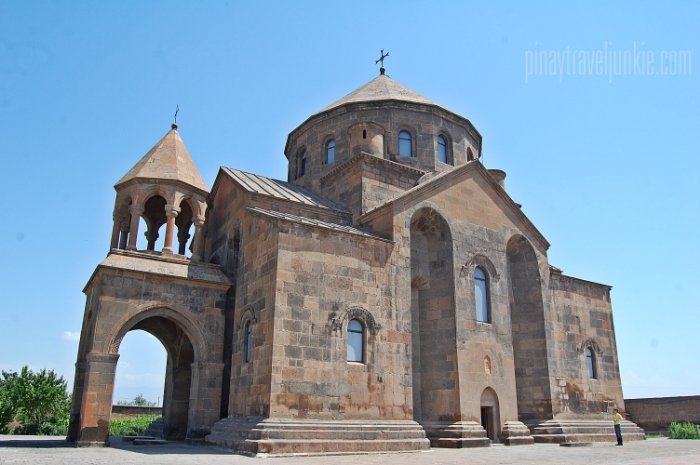 Saint Hripsimé (I never pronounced this right!) Church in Vagharshapat (Etchmiadzin). Built in the seventh century and renovated in the 17th century.
Saint Hripsimé (I never pronounced this right!) Church in Vagharshapat (Etchmiadzin). Built in the seventh century and renovated in the 17th century.
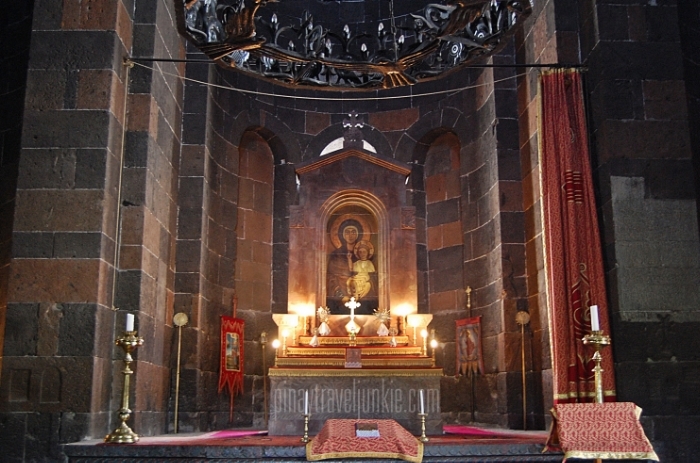 Saint Hripsime Church’s altar.
Saint Hripsime Church’s altar.
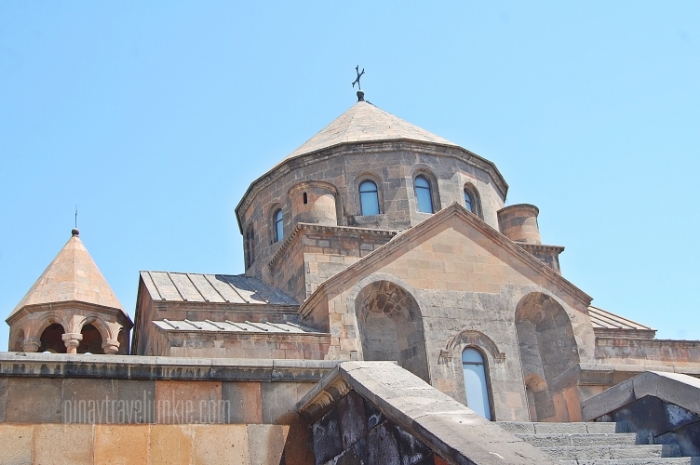 It may not look like it, but Saint Hripsime Church has been described as “one of the most complex compositions in Armenian architecture”.
It may not look like it, but Saint Hripsime Church has been described as “one of the most complex compositions in Armenian architecture”.
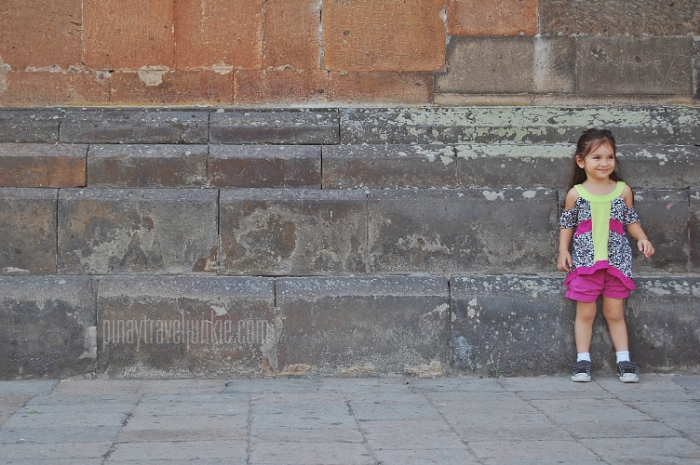 Day was spent introducing Jesus to two year-old Luna.
Day was spent introducing Jesus to two year-old Luna.
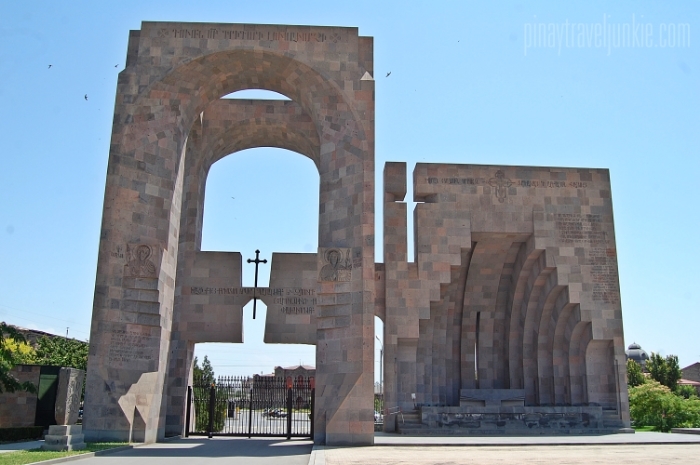 Gate of Saint Gregory (and open altar) to the grounds of the Mother See (Echmiadzin Complex).
Gate of Saint Gregory (and open altar) to the grounds of the Mother See (Echmiadzin Complex).
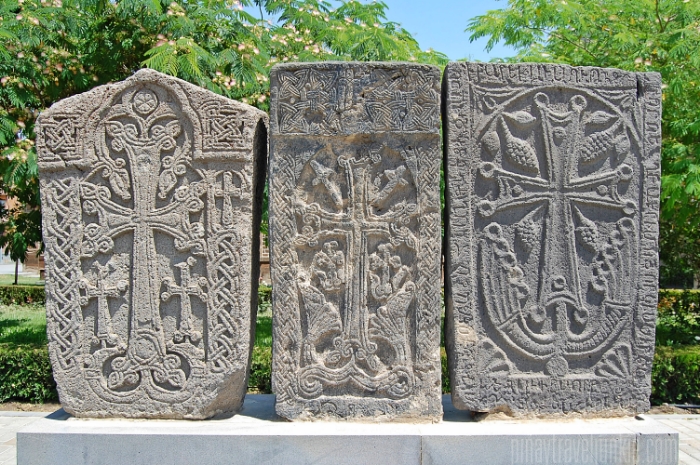 Khachkars lined the paths in Echmiadzin Complex. Khachkars, or Armenian cross-stones, are not just used as gravestones. They can also be erected for a living person. These steles carved from stone are believed to possess holy powers and can be used for worshipping. The art of khachkar-carving is inscribed in the UNESCO list of Intangible Cultural Heritage.
Khachkars lined the paths in Echmiadzin Complex. Khachkars, or Armenian cross-stones, are not just used as gravestones. They can also be erected for a living person. These steles carved from stone are believed to possess holy powers and can be used for worshipping. The art of khachkar-carving is inscribed in the UNESCO list of Intangible Cultural Heritage.
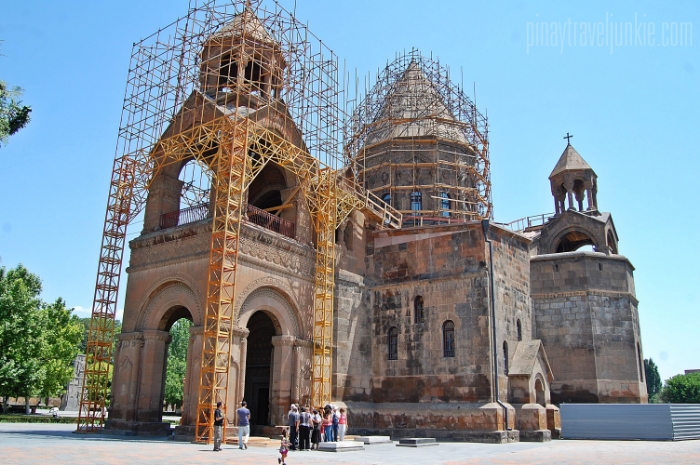 Echmiadzin Cathedral. Original structure was completed in 303. The cathedral was restored between 1441 and 1443 and has since underwent numerous renovations (as you can see in the photo, they were also doing some in 2013).
Echmiadzin Cathedral. Original structure was completed in 303. The cathedral was restored between 1441 and 1443 and has since underwent numerous renovations (as you can see in the photo, they were also doing some in 2013).
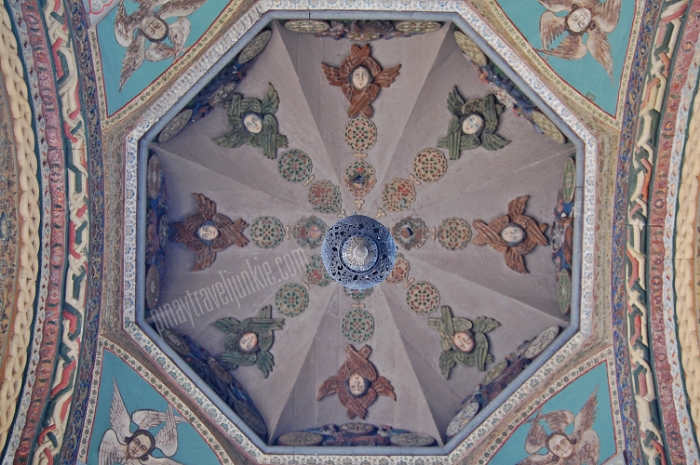 Frescoes inside the cathedral.
Frescoes inside the cathedral.
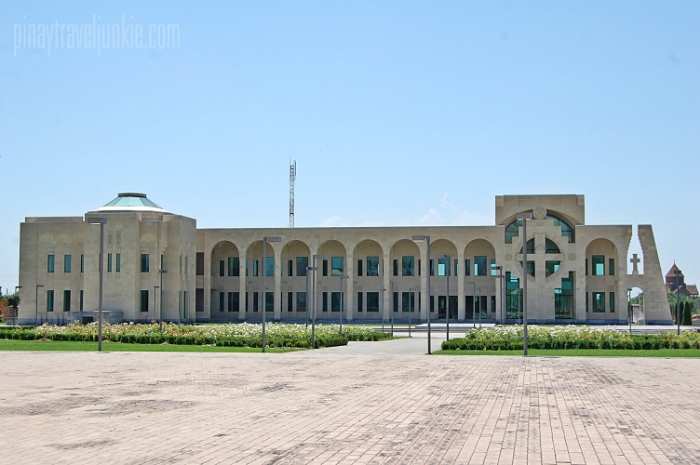 Vatche and Tamar Manoukian Library. Houses a collection of notable figures from the history of Armenian letters. Also keeps an extensive collection of Biblical publications.
Vatche and Tamar Manoukian Library. Houses a collection of notable figures from the history of Armenian letters. Also keeps an extensive collection of Biblical publications.
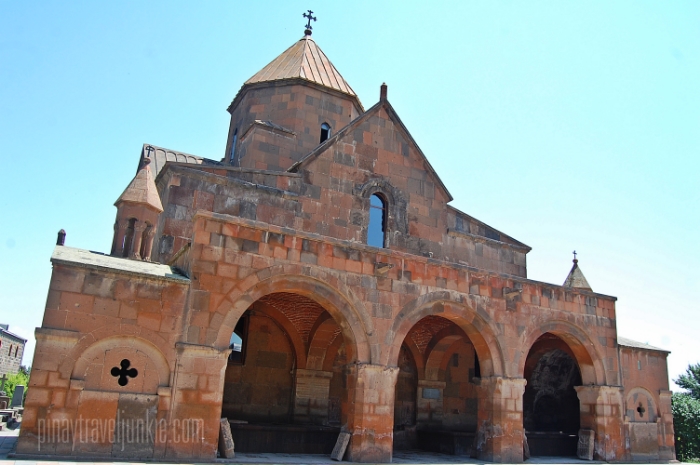 Saint Gayane Church (630), another church in Vagharshapat, named after an abbess who was martyred on the site it was built on. Gayane refused the advances of pagan Armenian King Trdat (Saint Hripsimé Church was also named after an abess who was martyred on its site for the same reason).
Saint Gayane Church (630), another church in Vagharshapat, named after an abbess who was martyred on the site it was built on. Gayane refused the advances of pagan Armenian King Trdat (Saint Hripsimé Church was also named after an abess who was martyred on its site for the same reason).
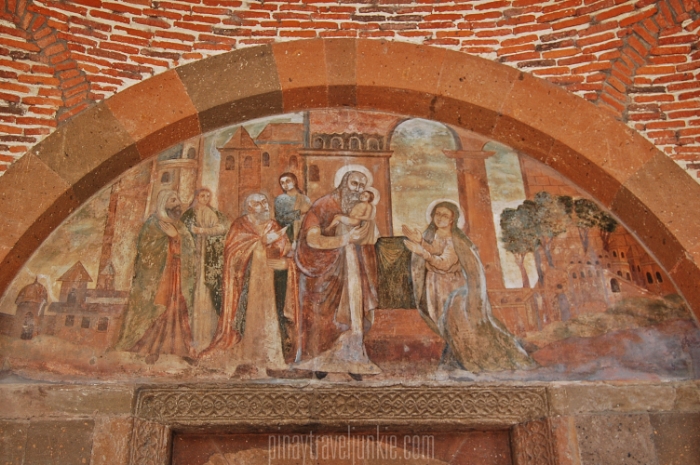 Frescoes of saints on the tympanum (that semi-circular surface above the door), Saint Gayane Church.
Frescoes of saints on the tympanum (that semi-circular surface above the door), Saint Gayane Church.
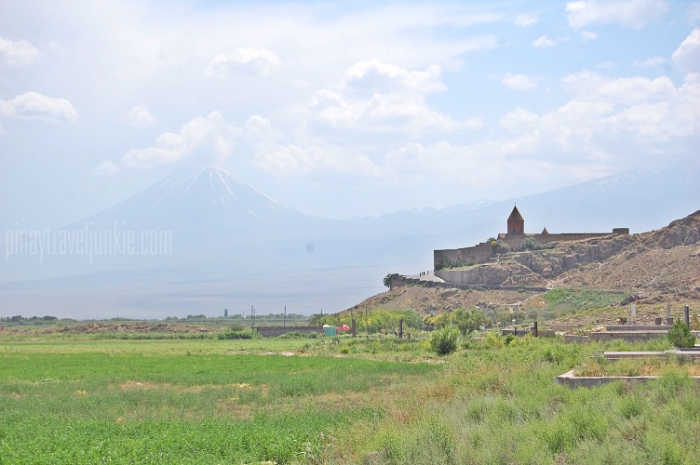 Khor Virap Monastery on a hillock (almost an hour drive from Vagharshapat), and a faint outline of Mount Ararat in the background. Our travel tribe was lucky to see the mountain in full glory.
Khor Virap Monastery on a hillock (almost an hour drive from Vagharshapat), and a faint outline of Mount Ararat in the background. Our travel tribe was lucky to see the mountain in full glory.
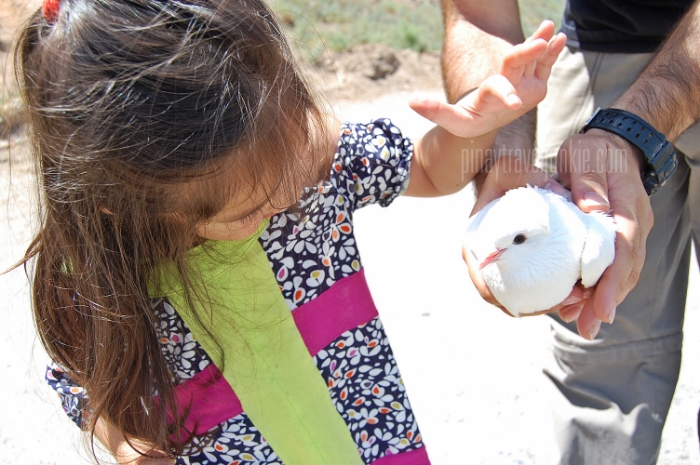 At Khor Virap’s parking lot, “Let’s set the bird free, mummy!”. We did and we paid for it. Sadly, the dove returns to its master to be caged again and earn more money.
At Khor Virap’s parking lot, “Let’s set the bird free, mummy!”. We did and we paid for it. Sadly, the dove returns to its master to be caged again and earn more money.
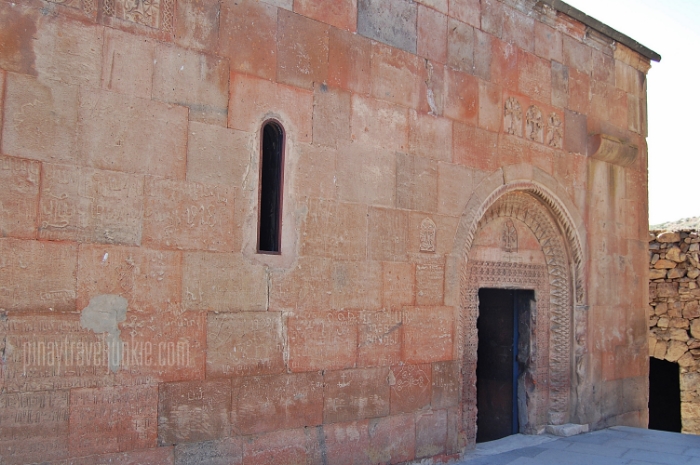 Gregory the Illuminator was imprisoned here for fourteen years by King Tiridates III (he later became his religious adviser).
Gregory the Illuminator was imprisoned here for fourteen years by King Tiridates III (he later became his religious adviser).
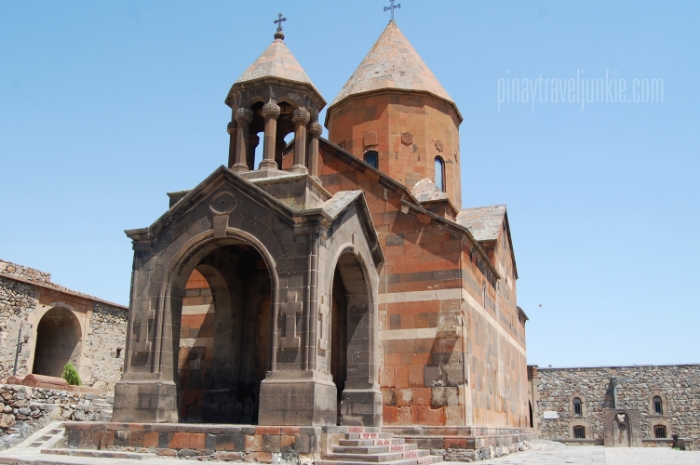 Church of the Holy Mother of God in Khor Virap.
Church of the Holy Mother of God in Khor Virap.
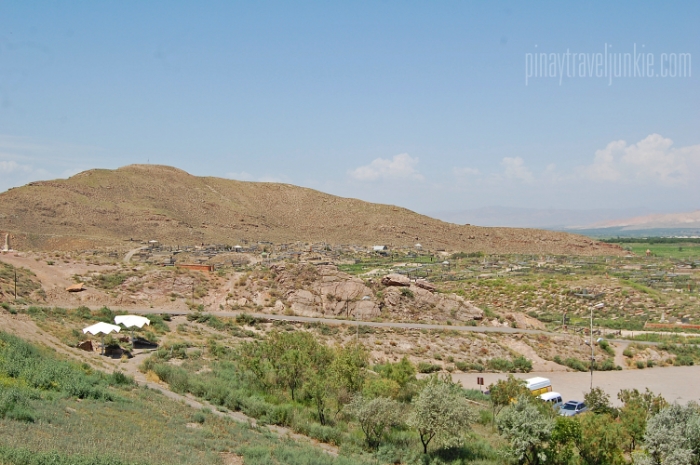 Khor Virap’s surrounds. Our view before descending to the parking lot and making our way back home.
Khor Virap’s surrounds. Our view before descending to the parking lot and making our way back home.
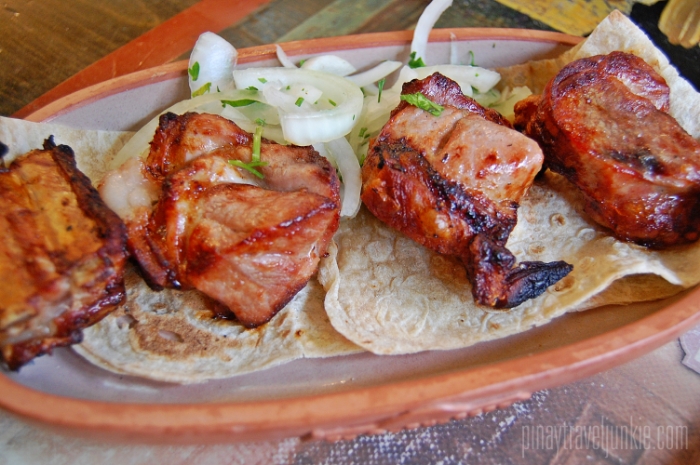 Khorovats (meaning “grilled” in Armenian) capped our day. Our tour guide took us to one of the best restos in Yerevan after the trip. Unfortunately, we never knew the name cause its sign was in Armenian writing!
Khorovats (meaning “grilled” in Armenian) capped our day. Our tour guide took us to one of the best restos in Yerevan after the trip. Unfortunately, we never knew the name cause its sign was in Armenian writing!
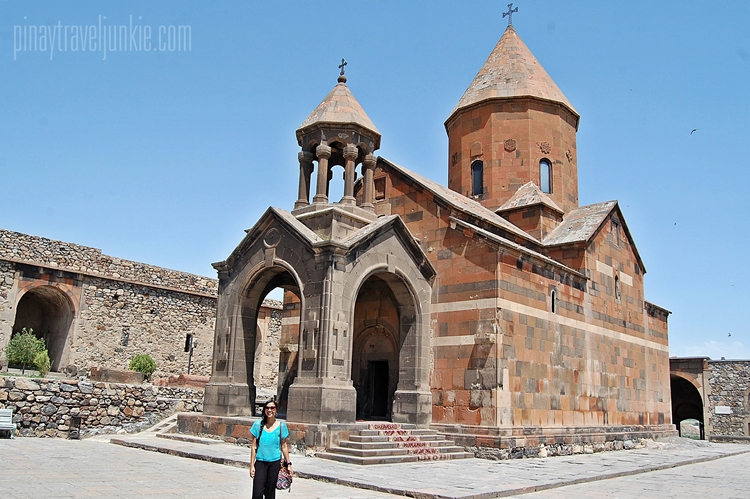


















bata pa si Luna dito. cant believe im going here in 10days 🙂
idol!